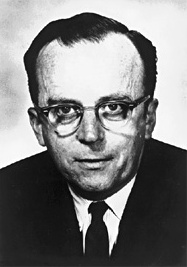Joseph Carl Robnett Licklider was an American scientist and researcher who worked with computing at MIT and later went on to become a Director at ARPA when the ARPAnet was being established. Licklider held degrees in physics, mathematics, psychology, and psychoacoustics. He was interested in computers, networks, communications, and relationships between people and machines. In particular, he thought and wrote much about how people and computers interacted at the time and how those interactions could be improved.
In his 1960 article titled Man-Computer Symbiosis, J.C.R Licklider wrote,
“Relative to men, computing machines are very fast and very accurate, but they are constrained to perform only one or a few elementary operations at a time. Men are flexible, capable of ‘programming themselves continuously’ on the basis of newly received information. Computing machines are single-minded, constrained by their ‘preprogramming.’ Men naturally speak redundant languages organized around unitary objects and coherent actions and employing twenty to sixty elementary symbols. Computers ‘naturally’ speak nonredundant languages, usually with only two elementary symbols and no inherent appreciation either of unitary objects or of coherent actions… Computing machines can do readily, well, and rapidly many things that are impossible for man, and men can do readily and well, though not rapidly, many things that are difficult or impossible for computers. That suggests a symbiotic cooperation, if successful in integrating the positive characteristics of men and computers, would be of great value. The differences in speed and in language, of course, pose difficulties that must be overcome.”
In the nascent age of digital computing, JCR Licklider understood the importance of the user interface and how it was related to the quality of experience that a person could have when interacting with a machine. In this same article, Licklider referred to the command line interface and computer screen of the time and opined that at that time it was the best that could be built, but added “Nowhere, to my knowledge, however, is there anything approaching the flexibility and convenience of the pencil and doodle pad or the chalk and blackboard used by men in technical discussion.”
He then suggested that potential future technologies (such as a desk-surface display and control, a computer-posted wall display to present information to an audience of multiple people, or automatic speech production and recognition) would help man be able to use computers more efficiently. These technologies have all since been developed and have been used to ease the man-computer interaction.
One of Licklider’s most important ideas that would also later come to fruition was the “Intergalactic Computer Network,” described in memos written during 1962. These memos outline a network that would connect millions of computers and users. At the time, the number of computers connected to one another could be counted on one hand and were used for little more than time-sharing. Licklider thought much more broadly and imagined a digital network across which people could conduct financial transactions, shop, share information, and more. One important feature of the “Intergalactic Computer Network” was that it would be user-friendly and would make use of graphics and symbols to ensure that the user understood. In 1968, he would publish a paper describing how the computer network could be used as a means of communication. Today, his ideas are easily mirrored by the Internet, the World Wide Web, and the graphical user interface.
- http://internethalloffame.org/inductees/jcr-licklider
- http://www.livinginternet.com/i/ii_licklider.htm
- http://groups.csail.mit.edu/medg/people/psz/Licklider.html
- http://www.securenet.net/members/shartley/history/licklider.htm
- http://www.historyofcomputercommunications.info/Book/2/2.1-IntergalacticNetwork_1962-1964.html
- The Information: A History, a Theory, a Flood by James Gleick. Published 2011.
- The Innovators: How a Group of Hackers, Geniuses, and Geeks Created the Digital Revolution by Walter Isaacson. Published 2014.


